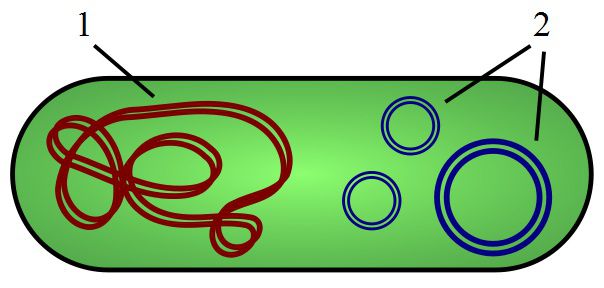-
 Nephrectomy
Nephrectomy
-
 GTP
GTP
-
 Free radical
Free radical
-
 Biotic crisis
Biotic crisis
-
 Erg
Erg
-
 Hour circle of a direction
Hour circle of a direction
-
 Chain reaction
Chain reaction
-
 Damselfly
Damselfly
-
 Achondrite
Achondrite
-
 Haem
Haem
-
 Ring Nebula
Ring Nebula
-
 Crystallisation force
Crystallisation force
-
 Acromegaly
Acromegaly
-
 Hydrogen vehicle
Hydrogen vehicle
-
 Cotyledon
Cotyledon
-
 Hardness of water
Hardness of water
-
 Hexagonal system
Hexagonal system
-
 Key escrow
Key escrow
-
 Antigorite
Antigorite
-
 Scrambling
Scrambling
-
 Calcite
Calcite
-
 Akinesia
Akinesia
-
 Sedge
Sedge
-
 Hubble's law
Hubble's law
-
 Single-flow CMV
Single-flow CMV
-
 Dimorphism
Dimorphism
-
 Sloth bear
Sloth bear
-
 Caterpillar
Caterpillar
-
 Forsythia
Forsythia
-
 Virophage
Virophage
Plasmid
A plasmid is a molecule of circular DNA that is, either natural or artificially modified for use in biological research.
Structure of plasmid
A plasmid is a molecule of double stranded, circular DNA which must have a replication origin in order for it to replicate in the cell independently and a selection gene so that it is not lost from the body during the course of many cell multiplications . Plasmids are found in prokaryotic organisms (bacteria) and in eukaryotes (including yeasts).
The plasmids used in biomolecular research may be far more complex and in particular also contain cloning cassettes which are short sequences recognised by restriction enzymes able to cleave DNA at these sequences.
Function of the plasmid
In nature, plasmids are pieces of DNA which can be transmitted from cell to cell by horizontal transfer. If it carries a gene of interest (for example resistance to an antibiotic), it confers a clear advantage to cells which have it.
Researchers insert a fragment of DNA of interest into plasmids using the cloning cartridges. They can then clone genes in order to express proteins or RNA and analyse them.
 Plasmids (in blue) are circular pieces of DNA, which are dissociated from the chromosome (in red). © Spaully, Wikimedia, CC by-sa 2.5
Plasmids (in blue) are circular pieces of DNA, which are dissociated from the chromosome (in red). © Spaully, Wikimedia, CC by-sa 2.5
Latest
Fill out my online form.



